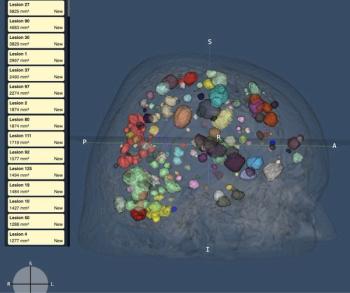
Emerging Concepts in X-Ray Radiation Dosing for Pediatric Patients
Could low-dose X-ray technology reinvent imaging exams for children?
Children are wired to be risk-takers. With that being said, there may be times in a child’s life when he or she needs diagnostic imaging. This may be due to a fractured leg, a sprained ankle, or a genetic medical condition such as scoliosis. Conventional X-ray imaging can be utilized to help diagnose numerous medical conditions, such as these, in pediatric patients.
However, when it comes to X-rays, limiting radiation exposure is particularly important in pediatric patients as high-dose levels can pose great risks, including increased risks of leukemia, brain, and thyroid cancer. Radiologists need to keep in mind the repeated exposure can result in cumulative dosing and elevated risk. Children are especially vulnerable to radiation exposure given their higher radiation sensitivity as their organs are still in development.1
When pediatric patients are referred for X-rays, radiologists should …
• Discuss the rationale for the examination with the patient and/or parent to ensure a clear understanding of the benefits and risks.
• Consider alternate options. Can an alternate exam using less or no radiation be used instead? Does the patient’s medical history include an X-ray scan of the specific area of interest already?
• Use pediatric protocols when medical imaging is needed. This may include lowering dose levels based on patient age and size.
• Purchase equipment that is designed for pediatric patient use or learn how to properly configure equipment for small patients.2
Medical device companies, such as Samsung, are actively focused on advancing technologies that aim to lower dose and help ensure patient safety.
Although conventional X-ray imaging produces relatively small radiation levels in comparison to other imaging modalities such as computed tomography (CT) and fluoroscopy, the cumulative radiation from multiple X-ray exams cannot be overlooked. To combat this, a team of Korea-based researchers developed an image processing engine (known as S-Vue™), which offers comparable image quality by utilizing an advanced feature preserving noise reduction algorithm.3
The tool has the capability to distinguish between quanta and the noise on a diagnostic image. Quanta can be defined as the patient’s anatomy while noise represents the non-essential captured radiation. This advanced technology could differentiate quanta and noise while maintaining the integrity of anatomy.
What Recent Studies Reveal About X-Ray Radiation Dose Reduction
In a recent study at the University of Texas Health Science Center at Houston, researchers assessed Samsung’s GM85 mobile digital radiography device and evaluated the amount of probable dose reduction in pediatric patients, ranging from one month to 14 years of age, who needed two chest anteroposterior (AP) X-ray exams within three months.1
Based on the patients’ conventional-dose X-ray images, low-dose images were generated using the dose simulation method, which recreates exposure parameters based on body depth and body weight. A team of radiologists then evaluated and selected the lowest acceptable dose image per patient. They selected the image where quality appeared to be most equivalent to the conventionally acquired image.1
The researchers found that the average radiation dose reduction rate was 47 percent of conventional dose levels.1 They also noted the age-averaged entrance surface dose (ESD) for conventional dose levels was 58.49 ± 34.02 μGy while the low dose level was 30.86 ± 17.00 μGy.1
In comparison, the European Commission guidelines noted an average ESD for conventional dose levels at 65.72 ± 10.57 μGy while the low dose level is 34.43 ± 4.89 μGy (based on subjects close to the age of 5).1
A team of researchers from the Departments of Pediatrics and Radiology and the Institute of Radiation Medicine at Seoul National University Hospital conducted a
Protocol A: 100 percent of the equivalent dose with the conventional protocol.
Protocol B: 80 percent of the equivalent dose with the conventional protocol. Protocol C: 64 percent of the equivalent dose with the conventional protocol.3
Based on image quality and single anatomic quality criteria, researchers found that low-dose protocols B and C were non-inferior to the conventional protocol. Essentially, by adding filtrations and a new denoising technique, dose levels can be lowered without affecting image quality.3 The study findings show the use of low-dose technology in a practical setting and illustrate the tool’s effectiveness in standard medical imaging.
Final Notes
Safer low-dose X-ray technology will advance the way imaging exams are done for children. Whether a child has a complex chronic condition or a surgical or medical issue, the patient’s safety should always be a priority. When determining new ways to advance patient safety, it’s crucial for medical device manufacturers to keep society’s littlest members top of mind. Keeping our youth at the center of rapidly evolving technology development will further solidify a brighter future for generations to come.
References
1. John S. Pediatric X-ray dose reduction and image quality maintenance using S-Vue™. Samsung White Paper. 2019.
2. U.S. Food & Drug Administration (FDA). Pediatric X-ray imaging. Available at: https://www.fda.gov/radiation-emitting-products/medical-imaging/pediatric-x-ray-imaging . Updated January 18, 2018. Accessed May 11, 2022.
3. Choi G, Cheon JE, Lee S, et al. Development of quality controlled low-dose protocols for radiography in the neonatal ICU a new mobile digital radiography system. AJR Am J Roentgenol. 2020;215(2):488-493.
Newsletter
Stay at the forefront of radiology with the Diagnostic Imaging newsletter, delivering the latest news, clinical insights, and imaging advancements for today’s radiologists.




